 Black Friday sale is now on. Book today and save! View deals
Black Friday sale is now on. Book today and save! View deals 
East Antarctica and the Ross Sea Travel Guide
Antarctica Antarctica from Australia and New Zealand Travel Tips Wildlife
Renowned for being the longest and most intense expeditions of all, journeys to East Antarctica and the Ross Sea depart from Australia and New Zealand just a handful of times, every southern summer.
These hard-core odysseys explore the least visited, wildest and historically significant region of the White Continent, retracing the steps of famed explorers like Robert Falcon Scott. Scott tackled this formidable route on his awe-inspiring yet ill-fated Terra Nova Expedition in 1912.
Enormous icebergs, large congregations of whales and seals, some of the largest colonies of penguins in the world and more sea birds than you could ever admire: these are just some of the astonishing highlights that entice visitors to this lesser-visited side of Antarctica.
Coupled with visits to a handful of revered historical sites dating back to the historic age of polar explorations, remote scientific research stations and some of the most isolated islands on earth, brimming with untold numbers of unique wildlife, these epic voyages are well and truly life-changing experiences.
Why East Antarctica & the Ross Sea?
The Ross Sea is often dubbed the last true pristine marine ecosystem left on earth and, rather conveniently, is the gateway to East Antarctica. The marine-life enrichment of this stretch of Southern Ocean, which extends from Ross Island in the west to the Marie Byrd Land on the east, is what attracts an abundance of unique marine life.
Over 100 species of fish thrive in the Ross Sea, as well as a dozen unique species of sea birds and countless marine mammals like orcas, minke, killer whales, leopard seals and Weddell seals. Minkes alone can number in their thousands and Adélie penguins, the most abundant of their species in this region, number in their millions.
More amazing still is the chance to see emperor penguins, the magnificent beast and largest of its kind is by far the most elusive wildlife to spot on classic Antarctic expeditions. Emperors live deep within the Antarctic Circle, closer to the South Pole, so expeditions to East Antarctica and the Ross Sea offer the highest chances of a spotting.
Then there is the small matter of absolutely mind-blowing landscapes. East Antarctica is the land of snow-capped volcanoes, eye-popping icebergs, endless sheets of ice and even arid deserts that resemble outer space.
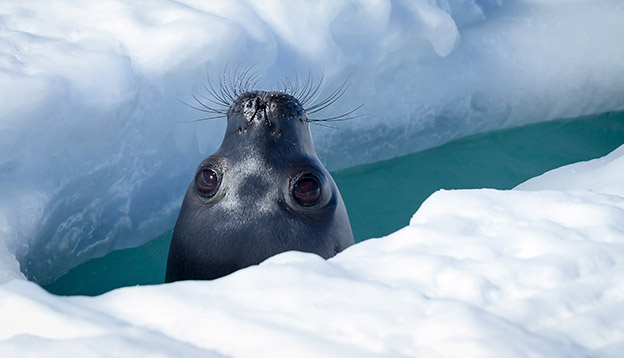
Highlights of East Antarctica and Ross Sea expeditions
Emperor Penguins
Among an incredible abundance of marine life, the coastline of East Antarctica sees a congregation of emperor penguins during the southern summer and this is undoubtedly one of the biggest enticements for those choosing to undertake this truly epic journey.

The most elusive and awe-inspiring member of the penguin world is an anomaly in every respect. Whilst other Antarctic penguin species travel north away from the White Continent as winter approaches, the Emperor heads south, right into the heart of it.
They breed and nest in winter, the coldest time of year, in the coldest place on earth. They are the only wildlife species that reside in Antarctica, all year long, with males famously huddling with their precious eggs for months on end in the dead of winter, whilst females set off to feed. The communal huddle braces winds of up to 200km/hr and temperatures that plummet to -50C.
By the end of the Antarctic winter, the male Emperor will have lost almost half their body weight.
The Emperor penguin winter huddle is, by all accounts, one of the most magnificent spectacles of nature on our planet; not that many have ever had the privilege of witnessing it.
Emperor penguins remain a very special and elusive sight yet chances you will spot them in East Antarctica are infinitely greater than if you were to travel anywhere else in the region.
Crossing of the Southern Ocean
Expeditions from Australia and New Zealand enjoy the most sailing days of any Antarctic journey. Whilst it would take you just two days to reach the western side of the peninsula from Ushuaia, you can look forward to a whole week of exquisite sea crossing: first the Tasman and then the Southern, all the way past the magical line of the Antarctic Circle.
On your weeklong crossing, you’ll not only be privy to exceptional lectures and presentations on the history, wilderness and wildlife of East Antarctica but you’ll also have the chance to enjoy the many services offered aboard your ice-strengthened vessel.
At the height of the summer, with long sunny days, whale-watching from the deck is at its absolute best – least of all because East Antarctica expeditions cast off towards the end of the cruising season, where whale numbers reach their peak.
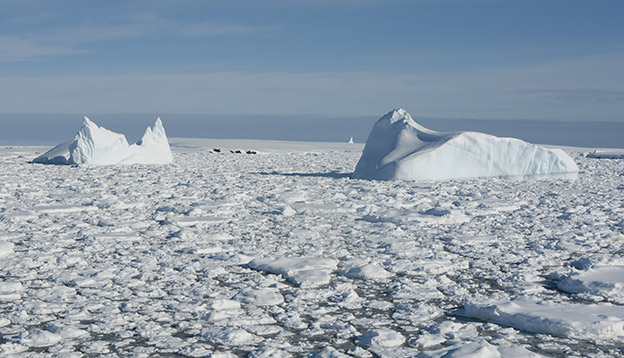
Visiting Historic Huts in East Antarctica
Many of the most famous moments in Antarctic exploration history took place in East Antarctica and visiting the remnants from the heroic age of polar exploration is a highlight of East Antarctica expeditions. Several of the huts built by early Antarctic explorers, such as Scott, Shackleton, and Mawson stand today as frozen time capsules to this famous era of exploration.
Shackleton’s Hut
Situated at Cape Royds, Shackleton’s Hut was the base for the British Antarctic (Nimrod) Expedition 1907–1909. Shackleton’s hut is protected by the New Zealand Antarctic Heritage Trust and has been carefully restored to its original condition.
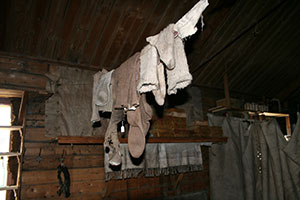


Scott’s Hut
Located at Cape Evans on Ross Island, Scott’s hut was originally erected in 1911 during Scott’s second Antarctic expedition, the British Antarctic Expedition of 1910–1913. Scott’s hut was the base for Scott’s famous and fatal attempt to reach the South Pole. Scott’s hut lay untouched for many years. When it was eventually dug out from the snow it was found to be in remarkable condition.



Mawson’s Huts
Situated at Cape Denison, East Antarctica, Mawson’s Huts are carefully protected and conserved by the Mawson’s Huts Foundation in partnership with the Australian Antarctic Division. These huts were erected by the 1911-1914 Australasian Antarctic Expedition, led by Sir Douglas Mawson. Mawson’s Huts are considered the birthplace of Australia’s Antarctic Heritage. Situated on Antarctica’s most windswept coastline, very few people have had the privilege of visiting Mawson’s Huts. As such, an expedition to this incredible piece of Australian history is a truly unique experience.
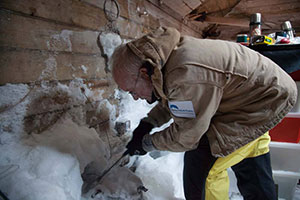


Campbell Island
An uninhabited sub-Antarctic island chain under Kiwi administration, Campbell is a UNESCO-listed treasure revered as the most prominent breeding spot for the southern royal albatross (the second-largest of its species) and four other albatross species, as well as three distinct penguin species, including the yellow-eyed penguin – a native of New Zealand. The local sea lion, fur and elephant seal populations have made a great recovery here since the long-gone history of hunting and fishing, making this one of New Zealand’s most marine-life enriched Sub-Antarctic islands.
Although inhabited at various times in history (particularly during the seal and whale-hunting boom of the 1800s), the island now hosts a meteorological centre and, aside from visits by the Royal New Zealand Navy, is only visited by a couple of Antarctic expedition ships, every year. Not every East Antarctica and Ross Sea expedition stop by Campbell Island yet, those that do, love the fact that being so close to Bluff (700km) means they make landfall on day 3 of their long expedition. As Antarctica expedition crews love to say: more people have climbed Everest than have ever visited these long-hidden islands – a visit is an unforgettable highlight on your way south.

Balleny Islands
This trio of volcanic and highly glaciated islands could either be your first or second attempted landfall on East Antarctica and Ross Sea expedition, depending on your chosen itinerary. British sealing captain John Balleny first spotted the isles in 1839 and, when he made landfall, became the first person to do so beyond the Antarctic Circle.
The world, as it were, is altogether different this close to East Antarctica and although the islands have been notoriously difficult to explore, the situation is getting easier every year, with extensive ice-melt allowing at least a few zodiac landings in recent years. Part of the Ross Sea marine-life hot-spot, the islands are renowned for attracting humpback whales, in particular, and for their extraordinary landscapes of ice-capped peaks and abundance of at least three seal species and countless migrating birds. Cruising alongside the coats of the Balleny Islands is an experience that’s simply out of this world.
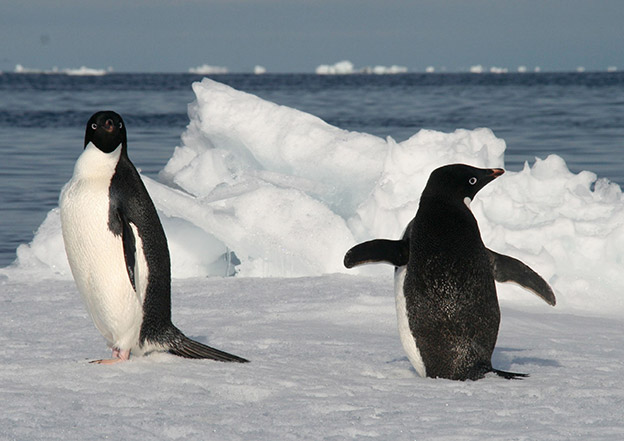
Auckland Islands
The Auckland Islands, like many Sub-Antarctic islands, is home to a plethora of fascinating wildlife species. The New Zealand (Hooker) sea lion (the world’s rarest sea lion) resides throughout the islands. Several species of albatross, including the royal albatross, live here, as well as yellow-eyed and rockhopper penguins.
The Auckland Islands are renowned for having the most diverse plant life of all the sub-Antarctic Islands with 202 native species. Summertime on the islands sees them come alive with colour when many of the islands’ mega herbs flower.
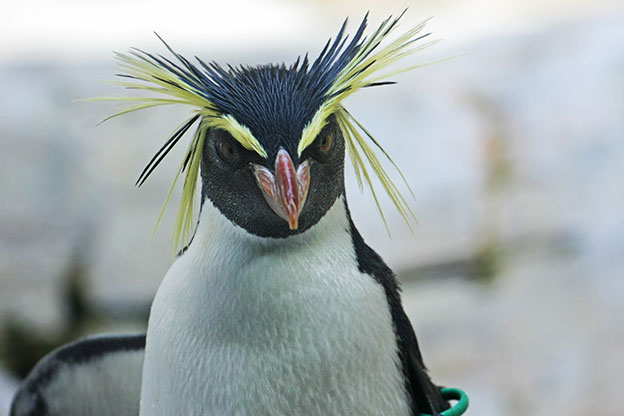
The Snares
Alongside the Auckland Islands, the Snares are part of New Zealand’s Sub-Antarctic territory. The name “Snares” is due to its hazardous reputation for ships. Located in relative proximity to New Zealand, the Snares have a reasonably temperate climate. They are home to an astonishing approximately 5 million birds – considered quite likely the highest density of bird life in the world.
Bird species include sooty shearwaters, Buller’s albatross, diving petrels, giant petrels, terns, skuas, and gulls. The endemic Snares crested penguin also reside here, as do colonies of New Zealand sea lions and fur seals.
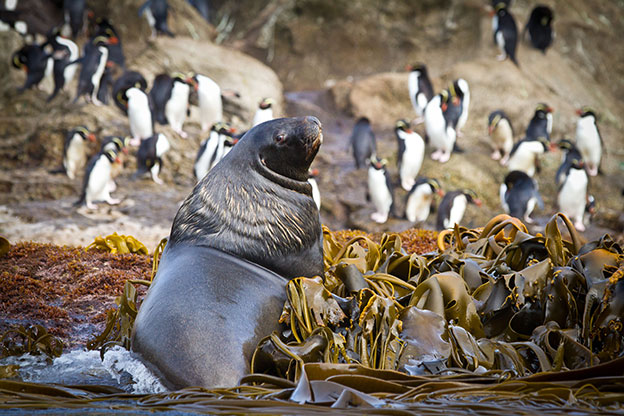
Cape Adare
Home to Antarctica’s oldest buildings, Cape Adare is an absolute highlight for history buffs. This was the site of the first-ever winter layover in Antarctica’s history and the remains of the hut used by explorer Carsten Borchgrevnik, the Norwegian leader of the 1898 British Antarctic Expedition still stand strong today. Borchgrevnik is perhaps the least-known of the Antarctic explorers yet his achievements were nothing short of impressive. These are the oldest huts in all of Antarctica and one of four left in East Antarctica. The main hut is in surprisingly great condition, in contrast to those built by Captain James Clarke Scott during his own winter expedition here in 1911 – there’s almost no trace of those left at all.
The cape, first discovered by Scott in 1841, is a seemingly inhospitable place, even if visiting aboard a world-class 21st-century vessel in the heart of summer. Framed by dark volcanic cliffs that form the northern end of the Transantarctic Mountains, the pebble beach leading to the historic huts is also enticing for another reason: this spot is home to arguably the largest colony of Adélie penguins in Antarctica.
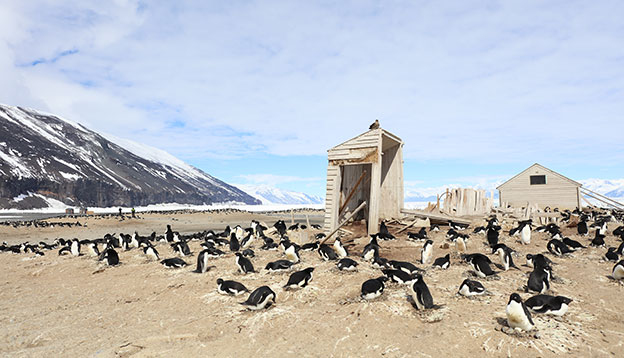
Terra Nova Bay
If the weather gods continue to be in your favour, you can also make landfall at Terra Nova Bay, a spectacular inlet along the coast of Victoria Land in East Antarctica. Nestled between mighty glaciers and impenetrable icy mountains, the bay is home to an Italian scientific research station, Zucchelli, whose crew is always overwhelmingly happy to receive cruise ship visitors. The station studies the bay’s exceptional biodiversity and sightings of more Adélies as well as emperor and Weddell seals are not uncommon.
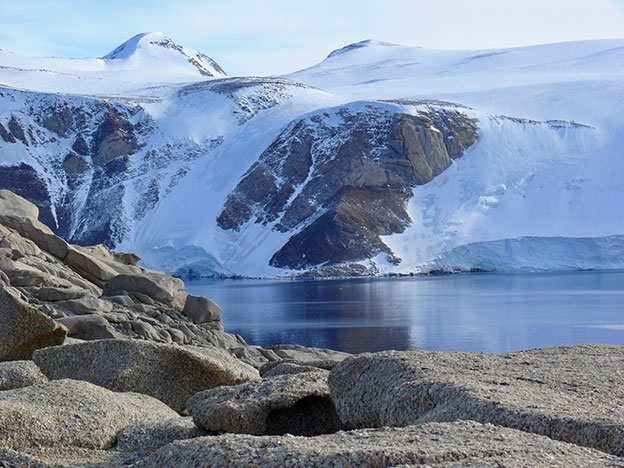
Ross Ice Shelf
The largest body of floating ice on our planet is one of the most flabbergasting highlights of East Antarctica. Only 10% of the shelf may be above sea level yet it still manages to leave everyone who sees it absolutely spellbound. The sheer ice cliff extends up to 50 metres in the air and stretches for more than 600km.
Aside from the Ross Ice Shelf being an imposing spectacle of its own accord, there are also huge wildlife and iceberg-spotting opportunities, making this one of the most exciting destinations of your entire journey.
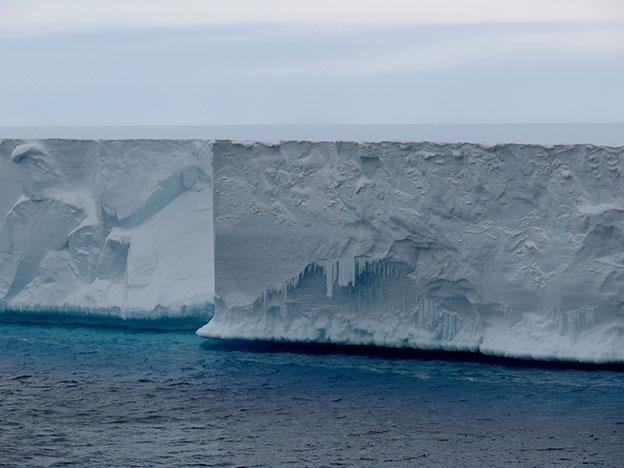
Ross Island
Home to the largest scientific station in the continent, McMurdo, as well as the historic Discovery Hut built by Robert Falcon Scott during his 1901-04 expedition, Ross Island is, thanks to extensive ice formation, essentially part of the East Antarctic mainland. Formed by four volcanoes, the most famous being Mt Erebus (the second-highest and southernmost active peak on earth)
McMurdo Station is the remotest corner of East Antarctica you can reach by expedition ship and a mighty fine place to go for a drink. Inhabited year-round and boasting an impressive array of services befitting its small-town status, the station is an ethereal and fascinating place to visit. Just a few hundred metres from this base is where you’ll find Discovery Hut, which was a pre-fab structure originally built in Sydney and carried to the southern end of the world by Scott during his Discovery Expedition and later used by Shackleton in 1908 during his Nimrod Expedition.
Marine life visits the coastlines of Ross Island (the island supports half a million Adélie penguins, among other species) and many East Antarctica expedition ships will spend at least two days docked here in order to explore and cruise by Zodiacs.
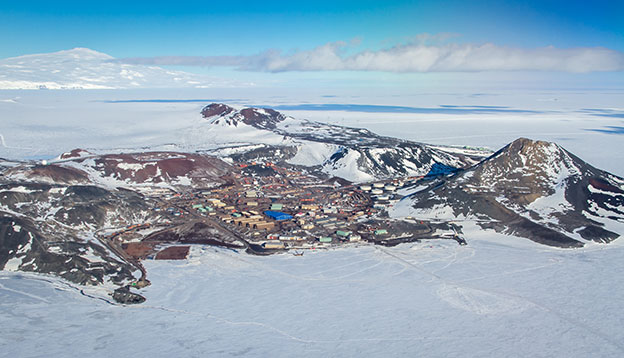
McMurdo Dry Valleys
Perhaps the most ethereal site to visit on this usually blinding-white paradise, the Dry Valleys of McMurdo are unusually snow-free for the great part, which makes for fantastic explorations on foot. This is the continent’s least icy terrain, maintained so thanks to strong katabatic wins which keep snow from accumulating. It is also more Mars-like than any other place on earth, boasting the kind of conditions that barely make life possible: high salt, extreme cold and wind. For these reasons, the McMurdo Dry Valleys are considered the most extreme deserts on our planet.
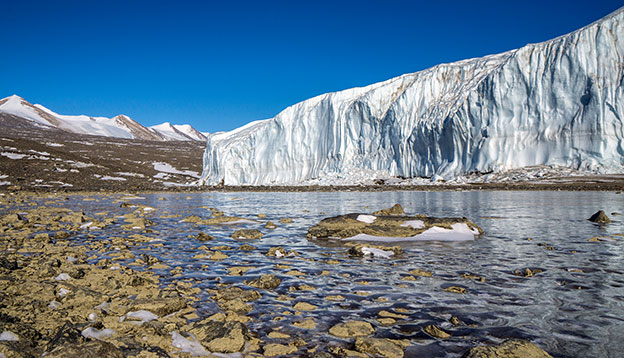
The infamous unpredictability of Antarctica means that no two expeditions are ever the same and that, when all is said and done, all landings really are at the mercy of the weather. The upside of East Antarctica and Ross Sea expeditions, however, is that their longer schedules allow for more itinerary manoeuvring and even backtracking in some instances in order to visit a highly coveted destination.
Moreover, do note that the above is just a taste of the many landing sites and options available in eastern Antarctica. If rough sailing conditions, bad weather or extensive ice blocks one landing spot, trust your experienced Captain to find another, all the while preserving your safety and well-being.
Best way to travel to East Antarctica and the Ross Sea
East Antarctica and Ross Sea expeditions cast off from Australia and New Zealand in January and February, aboard some of the hardiest expedition ships ever built. Itineraries range from 23 to 33 days, with longer routes including more of those amazing sub-Antarctic islands and extra landfall days on the East Antarctic mainland.
You will undoubtedly notice that these are some of the most expensive Antarctica expeditions on offer but, when put in context in terms of expedition days, certainly deliver the best value-for-money Antarctic experience of all.

Where Will You Go Next ?
- Popular Destinations
- Antarctica
- The Arctic
- South America
- Central America
- More to explore
- Amazon
- Antarctic Circle
- Antarctic Peninsula
- Argentina
- Bolivia
- Brazil
- Canadian Arctic
- Chile
- Colombia
- Costa Rica & Panama
- East Antarctica
- Ecuador
- Galapagos Islands
- Greenland
- Guatemala & Honduras
- Machu Picchu
- Mexico
- Patagonia
- Peru
- South Georgia and Falkland Islands
- Spitsbergen
- Sub Antarctic Islands

Talk to one of our experienced Destination Specialists to turn your Antarctic, Arctic and South American dream into a reality.
Contact us
